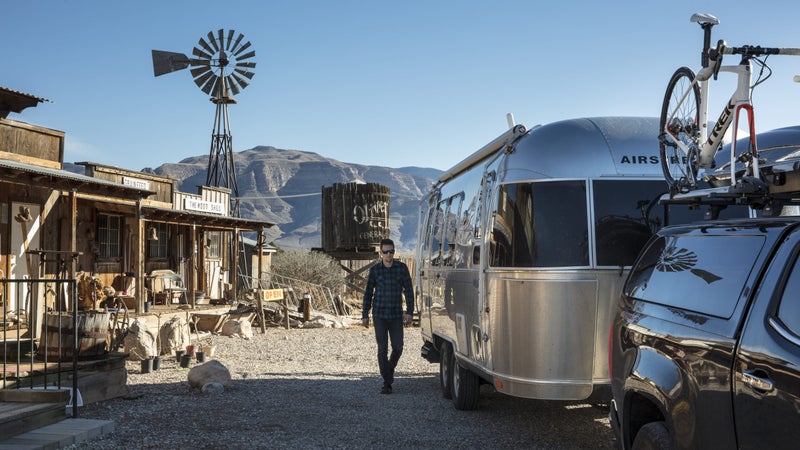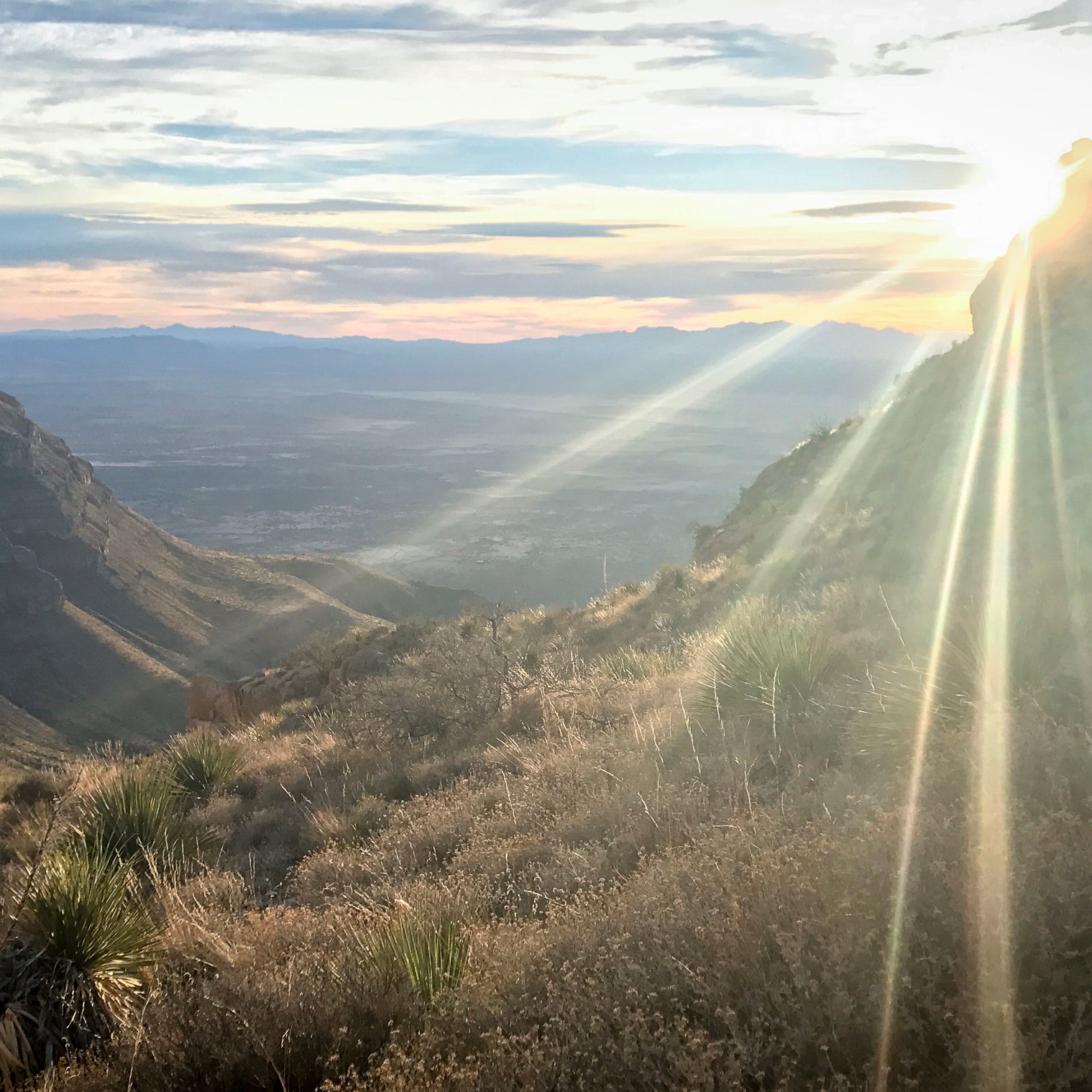In January, my wife, Jen, and I pulled Artemis the Airstream south to visit , but we ended up staying at .
That re-route will shape all our future travel.
Detour to Oliver Lee Memorial State Park
When we arrived late on a mid-winter afternoon at White Sands to find that travel trailers arenÔÇÖt permitted in the park, we had to scramble for a Plan B. Normally, National Forest and BLM lands are our first choice for their easy access, but the few sites we found quickly were close to the road, shabby, and overused. ThatÔÇÖs when Jen noticed a state park, Oliver Lee, 30 minutes to the east. There was no answer when we rang to see if they were booked, so we headed there anyway, not hopeful.
We stayed for almost two weeks.
Oliver Lee Memorial is a peculiar state park.┬áIt was once part of White Sands National Monument, an odd┬áassociation as the chalky gypsum dunes of the monument, nearly 30 miles away,┬ábear no physical resemblance to the scrappy, thorny, barren, high-desert recluse at the base of the dry Sacramento Mountains. The place was significant first as a stronghold dating back to the 1400s, then as a late 19th century homestead.┬áAnd though the place was transferred to the National Park Service in 1939, it didn’t come┬áinto the New Mexico state park systemÔÇöprobably for lack of fundingÔÇöuntil┬á1983.
That we could roll into Oliver Lee at 4:30 p.m. on a weekend and get an electric hook-up campsite a few days after the New Year speaks to the advantages of the state park system. Reservations in national parks are often made months, if not years, in advance, and the prices are double or more than the $14 we shelled out for a New Mexico state park site with hookups. If the national parks are the polished crown jewels of the U.S.┬ápublic land system, our state parks are the geodes that litter the American West: they may not look like much at first, but crack them open, and theyÔÇÖre far more ubiquitousÔÇöand nearly as dazzling.

This is not an attack on the national parks system. The countryÔÇÖs public lands must be counted as some of our finest and most important monuments. Go see them, support them, stay there. However, they are limited commodities, and, based on our experience, they often overshadow excellentÔÇöand otherwise overlookedÔÇöstate parks.
State Parks Aren’t Just Smaller National Parks
In the , we have exactly one national park, , which is an outrageous place that IÔÇÖve visited numerous times. (Yeah, that doesnÔÇÖt account for New MexicoÔÇÖs awesome national monumentsÔÇö14 of the countryÔÇÖs 129ÔÇöor historic parksÔÇöthree of┬áof 51ÔÇöor┬ánational preservesÔÇöone┬áof 20.) Everyone should visit White Sands. Coast to coast, only 27 states have national parks. Meanwhile, , of which IÔÇÖve seen only two. There are only 59 national parks compared to 10,234 state parks nationwide.
If the national parks are the polished crown jewels of the U.S. public land system, our state parks are the geodes that litter the American West.
Though IÔÇÖve often judged state parks as inferior to the national variety, based on Oliver Lee, these places are no less compelling. At the eastern flank of the park, where the mountains surge from the thorny flatlands, the (#106) wends irresistibly into the hills. IÔÇÖm generally not much of a hiker and had planned on a mountain bike ride on a nearby trail IÔÇÖd heard about following our backcountry overnights in White Sands. But seeing that Dog Canyon path burned like a well-used game trail into the mountainside, I couldnÔÇÖt resist.
We left at 2 p.m. after IÔÇÖd finished work, and though Jen was slightly anxious about carrying on, we pushed deeper into the parched mountains. We saw no one, save a couple likely in their 50s huffing up the initial slope. Then it was only century plants, rocky cliffs scraping our shoulders, and silence. We hiked five miles and over 3,000 vertical feet into the arid Sacramento Mountains, ogling homestead sites from over a century ago and land that felt like we were the first hikers in weeks. We bumped a few sturdy elk at our high point, walked through a herd of deer on the way down, heard a barbary sheep clatter rocks in the dusky eve, and finished long, long after dark. Dog Canyon wasÔÇöoutside of my ascent up Half Dome in Yosemite National Park and a backcountry push to Machu Picchu years agoÔÇöthe best hike IÔÇÖve done in two decades. And I had no idea it was sitting, waiting for me in a remote, unappealing part of off-the-map New Mexico.
Artemis was waiting for us in a 44-site campground that had only eight or ten visitors. We heated up cheese quesadillas and elk green chile from our hunt earlier in the year. And with weary legs and creaking knees, we plotted how we could visit every park in the state before the year was out.


